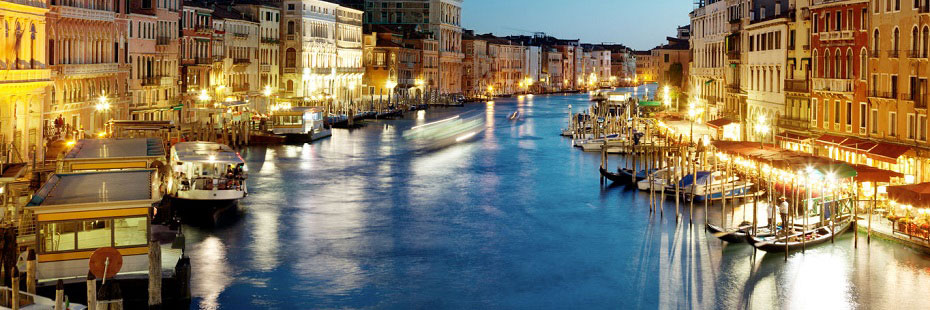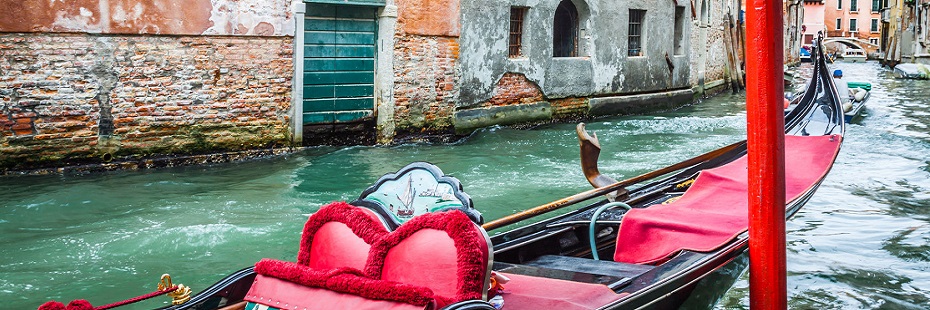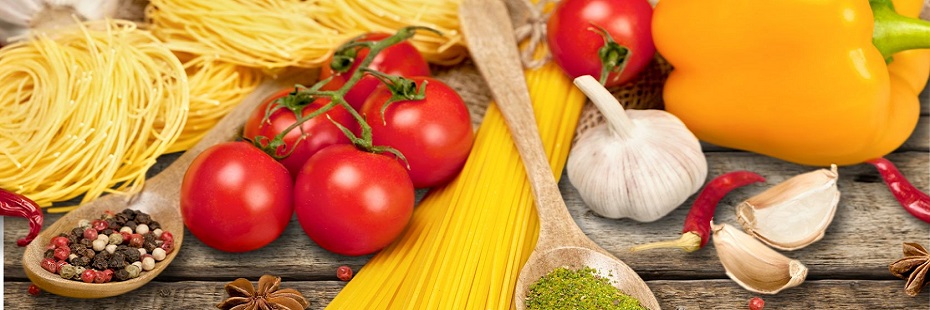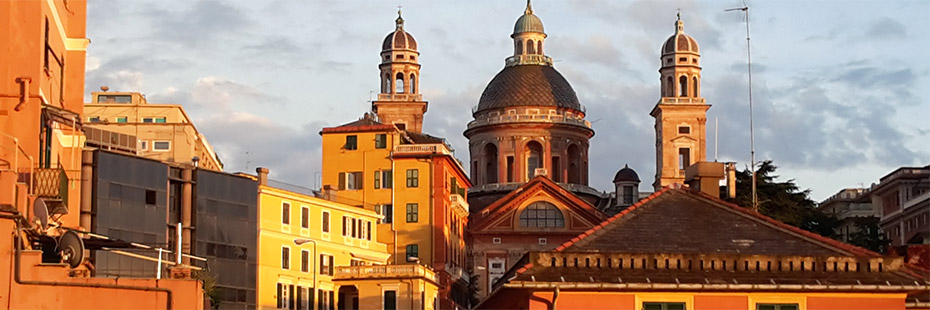"La Via Cassia (parte 2)" di Gaither Stewart
| Oltre la cresta di una collina, si apre la vista del lago di Bolsena. | Just over the crest of the hill, Lake Bolsena opens up at your feet. |
| A 305 metri di altitudine, il cratere del lago, (di 115 chilometri quadrati), è lungo 14 chilometri e profondo 146 metri; è pieno di trote, anguille e lucci che vengono tuttora catturati dai pescatori come migliaia di anni fa. | At 305 meters altitude, the crater lake of 115 sq. kilometers, is 14 kms long and 146 meters deep, filled with trout, eel, and pike fish, still caught by fishermen like thousands of years ago. |
 |
|
| La città di Bolsena è l'antica Volsinia, la più importante delle dodici città etrusche distrutte 265 anni prima di Cristo, dai discendenti dei legionari che sconfissero Veio. I vincitori portarono via 2000 statue da Bolsena, la quale aveva allora raggiunto l'apice della ricchezza e del lusso tramite la vendita e il consumo dei suoi famosi vini, mentre gli schiavi si occupavano degli affari pubblici. Lo storico romano Plinio scrisse che, ai suoi tempi, le due isole del lago galleggiavano. Oggi le isole sono stabili, ma tuttora disabitate, forse da quando la grande regina gotica, Amalasunta, figlia di Teodorico, fu imprigionata e uccisa a Martana. | Bolsena town is the ancient Volsinia, the most important of the twelve major Etruscan cities, destroyed 265 years before Christ by the descendants of the legionaires, who had defeated Veio. The victors carried away 2000 statues from Bolsena which had reached its apex of wealth and luxury, trading in and drinking their famous wines, while slaves ran civic affairs. Roman historian Plinio recorded that the lake's two islands floated during his times. Today the islands are stable, but still uninhabited, perhaps since the great Gothic queen Amalasunta, daughter of Theodorico, was confined and murdered on Martana. |
| Bolsena, e non Lourdes, è la culla del Corpus Domini. Quando un prete della chiesa di Santa Cristina dubitò della presenza di Cristo durante l'Eucarestia, del sangue sgorgò dall'altare impregnando l'ostia santa. L'ostia fu allora trasferita nella grande cattedrale di Orvieto, sulla montagna, e oggigiorno viene portata in una processione religiosa durante la giornata, ormai conosciuta nel mondo, del Corpus Domini. | Bolsena, not Lourdes, is the cradle of Corpus Domini. When a priest in the Church of Santa Cristina once doubted the real presence of Christ in the Eucharist, His blood bubbled from the altar, soaking the holy ostia [wafer]. The ostia was taken to the great cathedral of Orvieto on the hill, where today it is carried in the religious procession on the day that became known in the world as Corpus Domini. |
| Acquapendente, l'ultima città nello stato romano del Lazio, prende il nome dalle molte sorgenti del luogo. Dalle montagne selvagge, si apre sulla pianura sottostante che porta alla Toscana-Etruria, (il centro culturale dell'Italia durante l'epoca etrusca). | The last town in the Roman state of Lazio, Acquapendente, takes its name from the many springs in the area. From the rugged hill, opens up the plain below leading into Tuscany-Etruria, the cultural center of Italy in Etruscan times. |
| De Brosses odiava questo territorio lunare. | De Brosses hated this lunar territory. |
| Questo viaggiatore insopportabile scrisse che la prima cosa che fece appena arrivato a Roma fu precipitarsi in Vaticano, "come se avesse il sale sulla coda". Naturalmente lo aveva, ma non vedeva oltre la propria coda. Questa campagna è arida ma con quali promesse nascoste! La Val d'Orcia, la Val di Chiana e le terre dei vini toscani. Ed eccoli, i portali d'ingresso alla Toscana: il Monte Amiata a ovest e Radicofani a est. L'atmosfera è cambiata. Ha iniziato a cambiare a Bolsena, dove si sentono le tradizioni. LaToscana è la terra delle tradizioni antiche e rurali. Tradizioni di fantasmi e spiriti, diavoli, angeli e santi. Forse nessuna persona inerentemente atea ha bisogno di fede come i toscani, che credono ai loro santi ma allo stesso tempo ne ridono. | That unbearable traveler wrote that the first thing he did in Rome was to rush off to the Vatican "as if he had fire on his tail." Of course he did. He didn't see beyond his tail. This countryside is barren, but with what promise beyond. Val d'Orcia, Val di Chiana, and the Tuscan wine country. And there they are, the portals to Tuscany. Monte Amiata to the west, Radicofani to the east. The atmosphere has changed. It began changing back in Bolsena, where you feel the traditions. Tuscany is the land of old, rural traditions. Traditions of ghosts and spirits, devils, angels and saints. Perhaps no other inherently atheistic people needs faith like cynical Tuscans. Who believe in and mock their saints simultaneously. |
| De Brosses vide le assolate e desolate terre della Val d'Orcia a sud della Toscana e ne rimase inorridito. Ma questo francese decadente non era un romantico Goethe o Stendhal. Vedeva solo la corte, (corrotta), di San Pietro, così come alcuni occidentali in viaggio in Africa cercano la sicurezza delle loro ambasciate. Queste terre dure e queste montagne di roccia che si srotolano desolate, sono qui per creare varietà. Perché oltre il monte Amiata il paesaggio cambia velocemente. Il profilo della magica Pienza appare sulla cima. Una svolta dalla Via Cassia è obbligatoria. | De Brosses saw sun-parched, desolate lands in the Val d'Orcia in south Tuscany. He was horrified. But the effete Frenchman was no romantic Goethe or Stendhal. He was too eager for the corrupt court of Saint Peter's, like those western travelers in black Africa who seek out the security of their embassy. These harsh lands, these rolling, barren hills of rock, are here for variety. For the landscape quickly changes beyond Mount Amiata. The silhouette of magic Pienza looms up ahead on its hill. A detour from Via Cassia is obligatory. |
| Questo originario castello-villaggio medievale fu ricostruito dall'architetto fiorentino, Bernardo Gambarelli, come una città rinascimentale perfettamente pianificata, con palazzi magnifici e una cattedrale intorno alla Piazza d'Italia trapezoidale alla De Chirico. Dalle vie lungo le mura di cinta, la secca valle di roccia, deprecata da De Brossey, sembra invitante. | This formal medieval castle village was rebuilt by the Florentine architect Bernardo Gambarelli as the perfect, planned Renaissance town, with magnificent palazzi and the cathedral around a trapezoidal "Piazza d'Italia" alla De Chirico. From the walkways along the walls the dry, rock valley deprecated by De Brosses looks inviting. |
| I fantasmi sono
di casa nella vicina Montepulciano. La casa dello scrittore
ed enologo, Giorgio Harold Stuart, nipote di uno scozzese
emigrato in Toscana nel secolo scorso, ne è infestata.
Anche la città, come tutta la Toscana, è infestata
da fantasmi. Dalle stanze degli ospiti al terzo piano, fino
alle cantine piene di Brunello e di Vino Nobile di Montepulciano.
Stuart riferisce tutto nel suo libro "Italia dei fantasmi" pubblicato
naturalmente dalla Etruria Editori. Il fantasma dell'incisore del Vaticano, Nicola Cerbara, dopo aver visitato frequentemente nonno Stuart ora abita in casa. Racconti raccolti fra i contadini, racconti di un bussare alle porte notturno, gemiti dalle torri del castello, apparizioni e messe nere. Divenuto ormai un presentatore celebre, l'inventore di fantasmi Giorgio Stuart, presenta la sua testimonianza toscana a conferenze internazionali di parapsicologia. Queste sono le cose a cui i toscani credono e allo stesso tempo non credono. |
Ghosts are at home
in nearby Montepulciano. The townhouse of writer and enologist,
Giorgio Harold Stuart, the great grandson of a Scotch emigrant
to Tuscany last century, is infested. This hill town like
all of Tuscany is infested by ghosts. From the third floor
guest rooms to the wine cellars filled with Brunello and Montepulciano’s
Vino Nobile. Stuart records it all in his recent book, "Italia
dei fantasmi" published of course by Etruria Publishers. The ghost of Vatican engraver Nicola Cerbara, who after visiting frequently grandfather Stuart, now inhabits the house. Tales collected among Tuscan peasants, tales of nocturnal door knocks, wailings from castle towers, apparitions, black masses. Now a talk show celebrity, ghost-maker Giorgio Stuart is presenting his Tuscan testimony to international parapsychology conferences. That’s the stuff of Tuscans for whom seeing is both believing, and disbelieving. |
| Fantasmi e banditi. Santi e operatori di miracoli. Il territorio, da Monte Amiata a Montepulciano e Siena, è affollato di santi. I senesi parlano di Santa Caterina come se esistesse ancora. San Bernardino gira per il Monte Amiata e cura i malati. Iris Origo, la scrittrice inglese che ha passato gran parte della sua vita nella sua fattoria in Toscana, ha dedicato anni al suo lavoro monumentale su San Bernardino. Per lei è un santo puramente locale, al punto da trovar normale che un ragazzino si arrampichi su un albero per gridare: "San Bernardino è tornato". | Ghosts and bandits. Saints and miracle workers. The territory from Mount Amiata to Montepulciano to Siena is crowded with them all. Sienese speak of their Saint Catherine as if she were alive. Saint Bernardino is wandering around Mount Amiata, healing the sick. Iris Origo, the English writer who spent much of her life on her farm in the Val d'Orcia, dedicated years to her monumental work on Saint Bernardino. For her, he's the pure local saint. She found it normal that a village boy climbed a tree to yell "Bernardino has returned.'' |
| Non si può vivere
in Toscana senza vedere il famoso emblema di San Bernardino:
YHS le lettere del nome di Cristo. Il "santo nome" è
scribacchiato dappertutto. Sulle porte delle chiese, sui muri
delle case di campagna, su castelli fatiscenti e sulle volte
di cappelle abbandonate. I suoi nemici dicono che si trovi
scritto anche nelle taverne e nei bordelli. Il Santo Nome
divenne un culto. La Chiesa vi si oppose e San Bernardino
fu accusato di eresia. Quando il Papa lo convocò a
Roma, egli camminò (come molti santi uomini prima e
dopo di lui) lungo la polverosa Via Cassia per ottenere l'assoluzione.
Ora, quando vedrete il suo emblema su un muro in Ungheria,
in India o in Cina saprete che uno dei suoi seguaci è
passato lì. I toscani rurali sono credenti e eretici allo stesso tempo. |
You can't live
in Tuscany without seeing Bernardino's famous emblem, YHS,
the letters of Christ's name. "The holy name" scribbled
everywhere. On church doors, on the walls of country houses
and crumbling castles, on the vault of an abandoned chapel.
His enemies said also on taverns and brothels. The Holy Name
became a cult, the official Church hated him and Bernardino
was accused of heresy. When the Pope summoned him to Rome,
he walked down that dusty Via Cassia for absolution, like
many holy men before and after. Now when you see that emblem
on a wall in Hungary or India or China, you know that one
of his followers was there. Rural Tuscans are both believers and heretics. |
| Amano toccare i loro santi. | They like to touch their saints. |
| Eccoli qui, spalla a spalla, santi e banditi. Bruscone, un moderno brigante, lasciò la vanga per il vino, le donne e le canzoni nella tenuta estiva di Barbi, sulla Via Cassia presso Montalcino. Viveva di furtarelli e Brunello, finché morì, nel 1949, all'età di 85 anni. Un uomo felice, che dicono sia morto al contatto dell'acqua quando le suore cercarono di fargli il bagno. | There they are, shoulder to shoulder, saints and bandits. Bruscone, a modern brigand, turned his back on the sharecropper's plow, opting for wine, women and song on the Barbi Brunello wine estate further up Via Cassia at Montalcino. He lived on small robberies - and Brunello wine - until he kicked the bucket at age 85 in 1949. A happy man, he died allegedly from contact with water when Catholic nurses gave him a bath. |
26 Luglio 2025
TESTIMONIAL (more...):
"I am very happy with my Italian Lessons! My Italian is getter better every day because of my teacher! As I mentioned before, she is ..."







